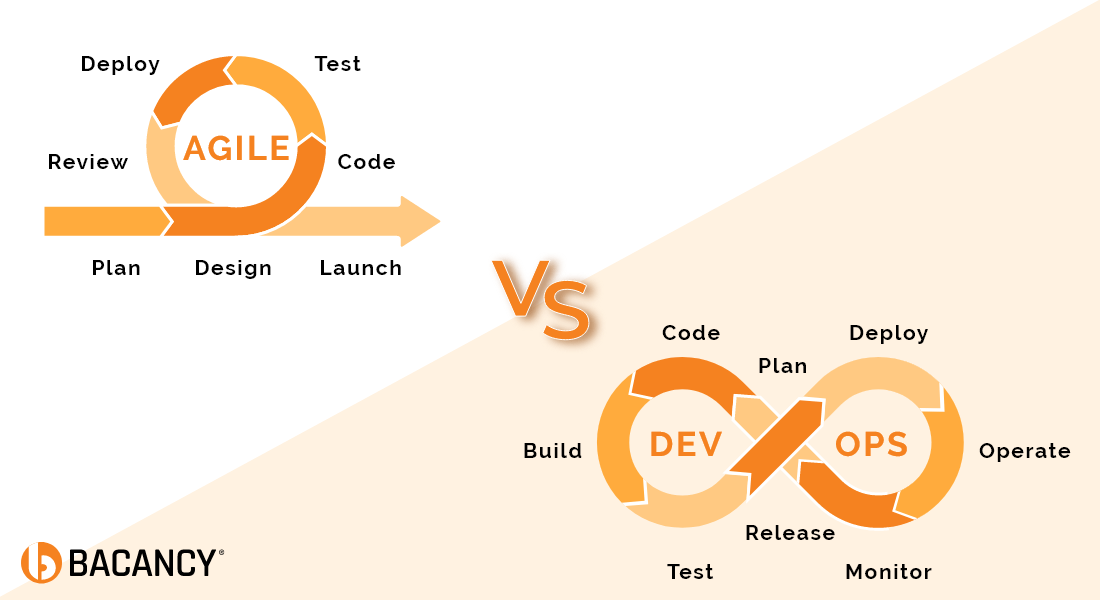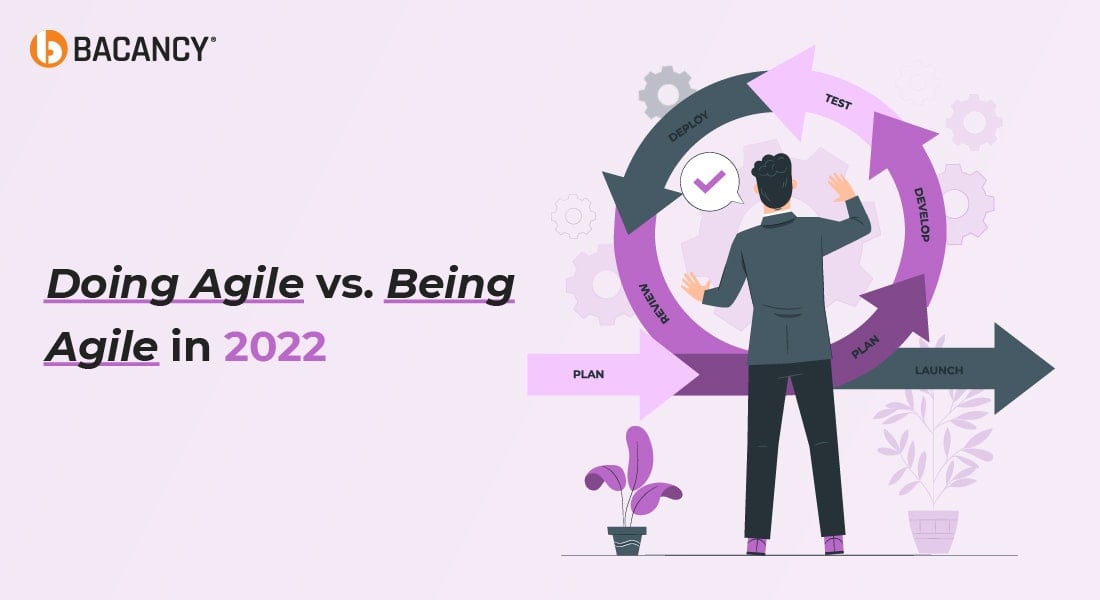Quick Summary:
In the software development industry, being Agile means unlocking the immense doors of opportunities for your business. Agile methodology has gained enormous popularity and acceptance all around the world. Do you know why and how? This post will guide you through the amazing benefits and importance of Agile transformation that has made this approach massive and demanding.
Table of Contents
Introduction
In the software development world, you must have heard about the term Agile; every 3 out of 5 businesses are moving towards adopting Agile in their business process. Do you know what the goal is behind it? In today’s competitive business world, being fast and smart are the key reasons for success. To succeed in the market, businesses need to deliver their products and services rapidly and reliably. In short, they require a predominant way to be more managing, organizing, and funding. And here, Agile comes into the picture. Agile simply means “able to move quickly and easily,” and in the software development environment, it refers to producing quality software in a short time and keeping continuous delivery.
Here’s how you can Make Your Business Agile Today
To help you understand what Agile methodology can do for your business, we have written this post. This post will guide you through the detailed Agile transformation journey, helping you with its benefits, and present several reasons you should go for agile transformation.
So without any further ado, let’s get started with its concept-
What is Agile Transformation?
An Agile Transformation is an act of transforming an organization’s existing nature into a fast-changing environment. An Agile transformation changes how organizations work before and after; it is not only about product development. It is more likely to reshape the business as a whole.
Traditional organizations are established upon a static, structural hierarchy that makes the processes lengthy and time-consuming; the decision rights flow in the hierarchical pattern. At the same time, Agile tends to have rapid learning and fast decision-making cycles.
Agile transformation is usually defined as creating networks of coupled teams, managing trade-offs, establishing coordinating dependencies, bringing products in the market fast, and allowing organizations to make informed decisions in a quick turnaround time.
Moving on, let’s discuss why organizations need to adopt Agile for their business operations-
Why should businesses go for Agile adoption?
Why go Agile? How does it bring a difference in our business operations? These are a few of the frequently asked questions by organizations generally. This section will help you with the reasons why should your organization needs to adopt the Agile framework-
1. Faster time to market
Agile framework promotes MVP (minimum viable product) and MMP (minimal marketable product) approaches that help organizations with small and secure investments and allows deliveries in less time. With MVP, organizations get an opportunity to present their early version of the product in the market with real-time customers to see if their idea is worth pursuing or not.
Whereas MMP comes with a bare set of features that a customer usually needs. It helps businesses to market their product faster and get an idea about the future features in advance. Rather than waiting for months of development and deployment, Agile development allows organizations to know what to deliver and when to deliver.
2. Faster failures
Every project begins with the intention of being successful in the market, but not all reach the destinations. Their fall can be due to several reasons, but ultimately they fail. Let’s say if you are spending months on a product or software, you have implemented all the advanced features and functionalities in the software to make it stand out, but what if it fails at last. What if your audience won’t be satisfied with the final product? It will be a huge setback for your business. Here Agile eliminates the chances of this massive failure; it lets you learn from the failures and move on quickly with great improvements. With an agile framework, you learn as you go and make changes wherever you require.
You do not require spending a huge budget and waiting for long months for your final product; it will offer you the product incrementally to experience the return on investment in time.
3. Save Dollars
The ultimate benefit of going Agile is that it saves your money greatly. Usually, a project built on assumptions consumes more money, as businesses do not have a proper idea about the real-time responses of the market. Agile development lets businesses build real-time products in less time. It lowers the risks, embraces the change, and gives organizations faster time to market their applications or software, which ultimately saves the cost. Agile emphasizes creating the things which are actually required rather than focusing on assumptions that have no grounds.
4. Keeps Transparency
Agile makes the business process completely transparent. This holistic approach brings the teams to a single center point where everyone is working towards achieving the same goal. It lowers the political landscape, making the organization’s environment more open where the workforce is encouraged, motivated, and engaged in the process. Agile methodology flattens the hierarchical approach and makes the community broad and open.
Agile Adoption Vs. Agile Transformation
Many businesses consider Agile adoption and agile transformation the same thing, but in reality, it’s not. There are some major differences between agile adoption and agile transformation.
Key Differences between Agile Adoption and Transformation
| Critical Parameters |
Agile Adoption |
Agile Transformation |
| Speed |
Agile adoption is pretty fast as compared to transformations. You can measure it in days or weeks. Also, the training in agile adoption won’t take a long time; it hardly requires 1-3 days of the training period. |
Agile Transformation takes years. It takes a long time to underground the transformation process; sometimes, organizations feel they will never reach the end goal. |
| Timeframe |
Many agile adoptions are based on project completion. Therefore their time frame is short and temporary. |
Agile Transformation comes with a long-term period; organizations cannot handle multiple projects and movements between teams. |
| Productivity |
Agile adoption is also considered Scrum, and after adopting Scrum, the teams have become more productive. |
With agile transformation, Productivity is significantly higher than adoption as it eliminates the management layers and empowers engagement, creativity, and innovation. |
| Organization Structure |
Agile adoption rarely has any significant impact on the organization structure as the organization does not change as a whole; it only changes the process. |
Agile transformation puts a powerful and controlling impact on the organization that makes the organization’s people defensive. |
| Learning |
Agile adoption involves learning from experts in agile development |
Agile transformation requires learning from experts in agile organizational design |
| Focus |
Agile adoption majorly focuses on processes |
Agile transformation focuses on results |
| Execution |
Agile adoption is executed by scrum masters, agile coaches, and agile software developers. |
Agile transformation is led by experts in agile change management. |
Agile Transformation: Where can it go wrong and how to make it right?
Many organizations fail to understand that Agile is not a process or methodology; it is a frame of mind. Businesses consider Agile as a set of practices that results in the loss of its original meaning.
To achieve agility in the business process, organizations use many other tools and techniques that contradict the original Agile values and principles. Here we have mentioned a few critical signs which indicate that you’re Agile go wrong-
- If businesses are doing agile- considering agile as a set of practices instead of being agile, it’s an alarm that they are going wrong. They require to adopt the values and principles of Agile to get success in the software development process.
- Considering Agile equals Scrum, many organizations consider agile and Scrum equals, but they are not; Scrum is a framework used to manage the projects while Agile is a frame of mind based on specific values and principles. It is much broader than Scrum.
- Avoiding project backlogs is necessary for organizations. Many companies have taken software development projects in bulk which ultimately leads to backlogs and eliminates the quality of the project. It would be better for businesses to organize their projects according to the set features that offer value to their real-time customers to avoid such situations.
- Ignoring pair programming leads to huge kiosks and confusion among the teams and the clients. Hence organizations need to take care of the pair programming on a prior basis. Pair programming promotes more collaboration and knowledge sharing among the team members, which results in rising team productivity and benefits the company with better results.
So when should you introduce Agile?
These five signs give you hint that it’s high time to introduce Agile in your business operations-
- When you have no new approach and your team is falling behind
- Your organization’s resources are continuously shifting or changing
- When you have a strong leader and scrum master that oversee the efforts of your team
- When you are planning to move to a new phase
- If requirements are not clearly defined
Then wake up; it’s time to go Agile that will nurture your business for better results.
Start your Agile software development project today at highly affordable prices.
Contact US Today!
Final Words
The agile methodology is all about empowering business operations and development teams to make quality software quickly and management to make more informed decisions about where to go next. By implementing agile in your business processes, you will get an opportunity to introduce your business processes on broader levels.
By getting the right talent at the right time, you can do wonders with Agile and bring amazing outcomes for your business. Agile gives promising results that will help you grow your overall business significantly. So what are you waiting for? Shift to agile today and see the difference that it will bring for your business. Build next-generation products with this methodology and deliver best-in-class products that bring real value to your customers.
If you are looking for a professional hand, we are here to assist you. We are a leading Agile software development company which is dedicated to innovation and creativity. Our passionate team of Agile developers will help you with world-class solutions that will bring growth and prosperity to your business.
Frequently Asked Questions (FAQs)
Agile development is an iterative approach used for software development and project management. It helps organizations’ teams to deliver real value to their customers in quick turnaround times.
Agile development usually involves six phases, including- concept, inception, iteration, release, maintenance, and retirement. The agile development cycle can be more or less dependent on the project requirements.
An agile team can be small and large; it depends upon the requirements. In an agile team, usually, there is a Team lead, team member, product owner, stakeholders, domain experts, technical experts, and independent testers.
The cost to hire agile software development services will completely depend on your project size and requirements. To know more about it, feel free to get in touch with our agile development experts, drop us your inquiry at solutions@bacancy.com , and get a call from our experts shortly.






